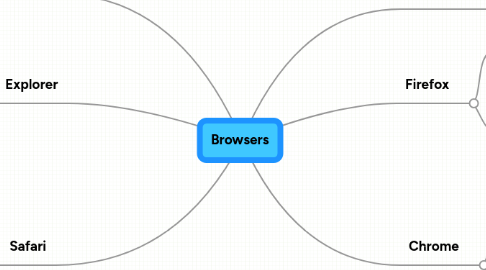
1. Opera
1.1. Pros:
1.1.1. Gives you tools to do a wide range of tasks besides browsing. This includes: email, managing contacts, chatting on Internet Relay Chat (IRC) clients, downloading files via BitTorrent, and reading Web feeds.
1.1.1.1. More of an internet suite than just a browser (particularly the latest version).
1.2. Cons:
1.2.1. Has its own widgets – small web applications that start from within Opera
1.2.1.1. The latest version, 10.10, was released after we had finished testing, but is notable as it has several major improvements.
1.2.2. http://www.choice.com.au/Reviews-and-Tests/Technology/Software-and-online-services/Internet/Web-browsers-review-and-compare/Page/The%20Contenders.aspx
2. Safari
2.1. Pros:
2.1.1. Powered by the speedy WebKit engine and with mobile versions for the iPhone and iPod Touch.
2.1.1.1. Apple’s own browser is available for Mac OS X and for Windows
2.2. Cons:
2.2.1. Also includes tabbed browsing, page previews and private browsing
2.2.1.1. Safari incorporates the look and feel of Mac OS X with the Cover Flow
2.2.2. http://www.choice.com.au/Reviews-and-Tests/Technology/Software-and-online-services/Internet/Web-browsers-review-and-compare/Page/The%20Contenders.aspx
3. Explorer
3.1. Pros:
3.1.1. Its massive market share means web developers have to take compatibility with IE into account when creating any website.
3.1.1.1. With the Microsoft behemoth behind it, Internet Explorer is probably the baseline for web browsing.
3.2. Cons:
3.2.1. The latest version of IE runs each tab as a separate process to boost stability and security and also features a secure mode for “private browsing”.
3.2.1.1. Microsoft’s Mac version was discontinued several years ago
3.2.2. http://www.choice.com.au/Reviews-and-Tests/Technology/Software-and-online-services/Internet/Web-browsers-review-and-compare/Page/The%20Contenders.aspx
4. Define: Browser
4.1. A web browser is a software application for retrieving, presenting, and traversing information resources on the World Wide Web. An information resource is identified by a Uniform Resource Identifier (URI) and may be a web page, image, video, or other piece of content.[1] Hyperlinks present in resources enable users to easily navigate their browsers to related resources.
4.2. http://en.wikipedia.org/wiki/Browser_(Web)
5. Chrome
5.1. Pros:
5.1.1. Google has also opened Chrome to developers to create third-party extensionsGoogle’s open source browser, released in late 2008.
5.1.1.1. Google’s open source browser, released in late 2008. Chrome’s emphasis is on speed, simplicity and style, using layout themes and an uncluttered look.
5.2. Cons:
5.2.1. Chrome still doesn’t have a print preview feature.
5.2.1.1. If you haven’t tried one of these browsers before, we would highly recommend giving one or both of them a go for a solid week -- though Mac users will likely have already spent their fair share of time with Apple's software, which can't be said for Windows users and Chrome.
5.3. http://www.choice.com.au/Reviews-and-Tests/Technology/Software-and-online-services/Internet/Web-browsers-review-and-compare/Page/The%20Contenders.aspx
6. Firefox
6.1. Pros:
6.1.1. Ranks a distant second behind IE for market share.
6.1.1.1. Firefox has climbed to second place with 30 percent market share and the last 9 percent shared between Chrome, Opera, Safari and smaller rivals.
6.2. Cons:
6.2.1. However, it now looks like the entire Mozilla mobile teamhas taken it to heart, and have decided that they will not develop for Windows Phone 7 until a proper development platform is provided.
6.2.1.1. Even though Firefox didn’t make it to 100 and Chrome had failed the ‘linktest,’ these browsers at least seemed to run the test in the same amount of time as Safari.
6.2.2. http://www.choice.com.au/Reviews-and-Tests/Technology/Software-and-online-services/Internet/Web-browsers-review-and-compare/Page/The%20Contenders.aspx
